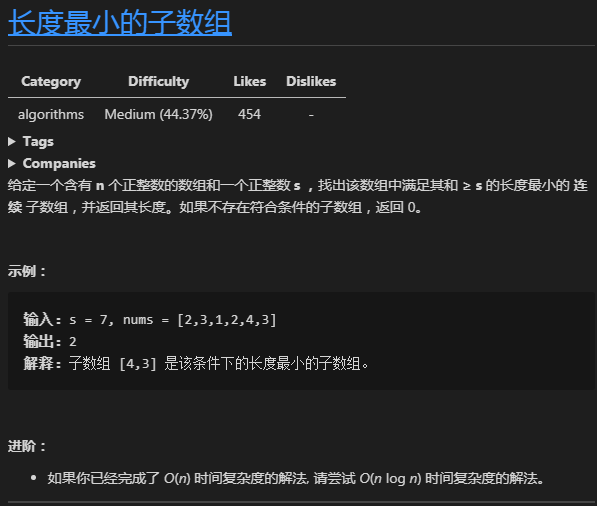
法一:(O(n^2))
/*
* @lc app=leetcode.cn id=209 lang=cpp
*
* [209] 长度最小的子数组
*/
// @lc code=start
class Solution {
public:
int minSubArrayLen(int s, vector<int>& nums) {
int n = nums.size();
if (n == 0) {
return 0;
}
int ans = INT_MAX;
for (int i = 0; i < n; i++)
{
int sum = 0;
for (int j = i; j < n; j++)
{
sum += nums[j];
if (sum >= s)
{
ans = min(ans, j - i + 1);
break;
}
}
}
return ans == INT_MAX ? 0 : ans;
}
};
// @lc code=end
法二:双指针
/*
* @lc app=leetcode.cn id=209 lang=cpp
*
* [209] 长度最小的子数组
*/
// @lc code=start
class Solution {
public:
// O(n): 双指针,其中 n 是数组的长度。指针start和end最多各移动 n 次
int minSubArrayLen(int s, vector<int>& nums) {
int n = nums.size();
if (n == 0)
{
return 0;
}
int MAX_VALUE = INT_MAX;
int ans = MAX_VALUE;
int start = 0, end = 0; // 初始化
int sum = 0;
while (end < n)
{
sum += nums[end];
while (sum >= s)
{
ans = min(ans, end - start + 1);
sum -= nums[start];
start++;
}
end++;
}
return ans == MAX_VALUE ? 0 : ans;
}
};
// @lc code=end